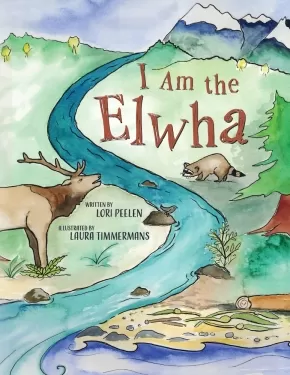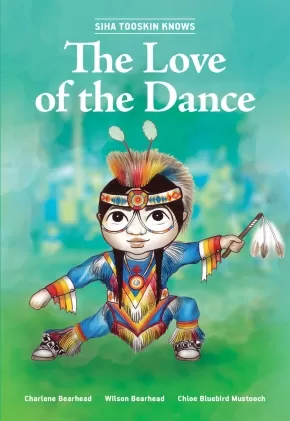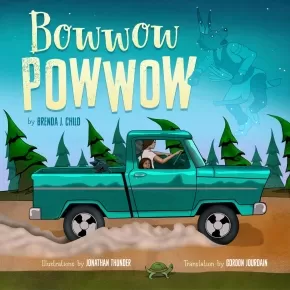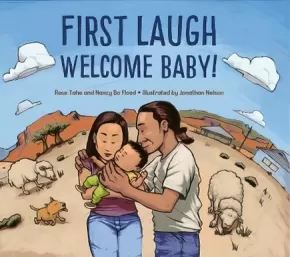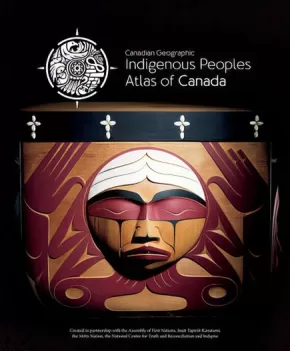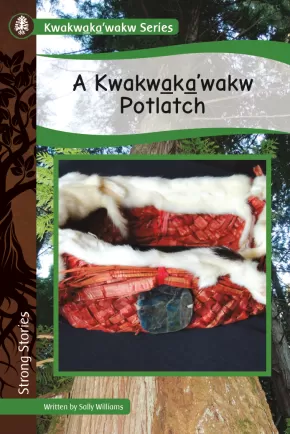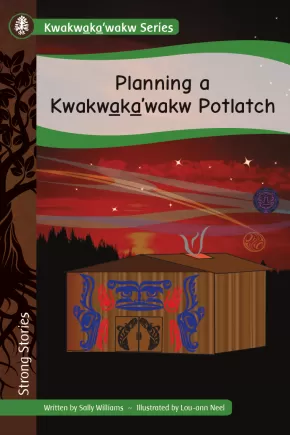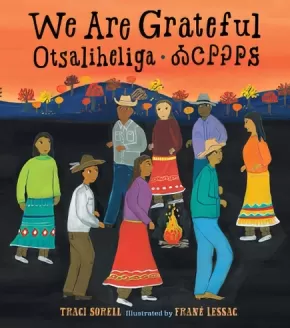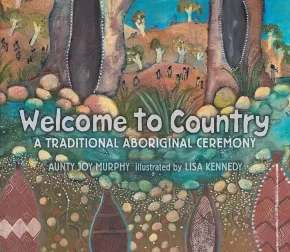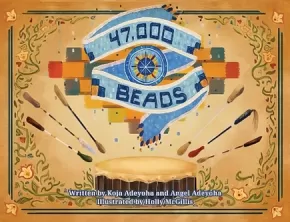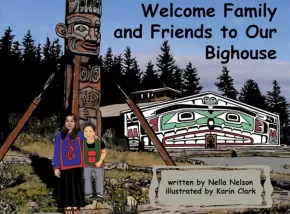
Ceremonies
31
-
45
of
53 Results;
Sort By
Go To
of 4
I Am the Elwha (HC)
 $18.50
$18.50

Artists:
Format:
Hardcover
Text Content Territories:
Indigenous American; Native American; Salish; Coast Salish; Klallam (Clallam); Lower Elwha Klallam Tribe;
ISBN / Barcode: 9781771744744
Synopsis:
Synopsis:
“I am the Elwha, rushing down to the sea. I am the Elwha, wild and free.”
The Elwha River flows 72 kilometres (45 miles) from its source in the Olympic Mountains to the Strait of Juan de Fuca in the Pacific Northwest. Uniquely, it hosts all six salmon species (Pink, Chinook, Coho, Sockeye, Steelhead, and Chum) as well as several species of trout.
In 1911 two dams were built on the river. The dams blocked the migration routes of the salmon and dramatically altered the entire river ecosystem for 100 years. In 2012 the dams were decommissioned and the world’s largest dam removal and habitat restoration project began.
In this lyrical and beautifully illustrated book, the author chronicles the history of the Elwha. Narrated by the powerful voices of plants and animals that inhabit the river ecosystem, the dam builder, a worker, and the river itself, this story celebrates the ongoing rewilding of this special environment and offers a welcome to all of the creatures who are coming home.
To learn more visit: www.elwha.org
Awards
- 2021 Riverby Award for Young Readers
Reviews
“I Am the Elwha is a powerful read about a powerful river and those who value and protect it." – Raina Delisle, Hakai Magazine
Educator Information
At the back of the book are three pages of cultural, scientific, and historical information that discuss the following:
- the importance and symbolism of salmon to the Lower Elwha Klallam Tribe and other Coastal Salish Tribes
- facts about the six species of salmon found in the Elwha River (Chinook, Pink, Chum, Sockeye, Coho, and Steelhead)
- the history of the Elwha River and its status today
Keywords / Subjects: The Elwha River, Rivers, Dams, History, Environmental Awareness, Lower Elwha Klallam Tribe, Coast Salish, Native American, Culture, Washington, Animals, Salmon, First Salmon Ceremony, Plants, Nature, Settlers, Social Responsibility, Environmental Activism, Poetry.
Recommended for grades 3 to 7.
Additional Information
32 Pages | 8.5" x 11" | ISBN: 9781771744744 | Hardcover
Authenticity Note: This lyrical story, which chronicles the history of the Elwha River, is written by Lori Peelen. Robert Elofson, Tribal Elder and Harvest Manager in the Natural Resources Department for the Lower Elwha Klallam Tribes, approved Lori's work and contributed a few pages of back matter at the end of the work. Lori's story was further approved by Frances Charles, the Tribal Councilwoman for the Lower Elwha Klallam Tribe, after the entire council read and approved it.
The Canadian Content label has been applied because the illustrator of this work is Canadian.
Powwow: A Celebration through Song and Dance (HC) (5 in Stock)
$24.95
Format:
Hardcover
Text Content Territories:
Indigenous American; Indigenous Canadian;
ISBN / Barcode: 9781459812345
Synopsis:
Synopsis:
Feel the power of the powwow dance.
Powwow is a celebration of Indigenous song and dance. It’s a journey through the history of powwow culture in North America, from its origins in colonization, the Indian Act and the Wild West shows of the late 1800s to the thriving powwow culture of today. As a lifelong competitive powwow dancer, Karen Pheasant-Neganigwane is a guide to the protocols, regalia, songs, dances and even food you can find at powwows from coast to coast, as well as the important role they play in Indigenous culture and reconciliation.
Educator & Series Information
Recommended for ages 9 to 12.
Beginning with a historical look at the origins of the powwow and then moving on to what they look like today, this book is a practical guide to the songs, dances, regalia, culture, and food associated with different powwows across North America.
This book explores how powwow culture, and an understanding of its importance in Indigenous culture, can be a part of the narrative of reconciliation.
The author is a longtime competitive powwow dancer who has travelled to powwows across North America.
This book is part of the Orca Origins series that explores cultural celebrations throughout the world.
Keywords: powwow dance, Indigenous culture, reconciliation, history, ceremonial dance.
Recommended in the Canadian Indigenous Books for Schools 2020/2021 resource list for grades 4 to 8 for English Language Arts, Social Studies, and Dance.
Additional Information
88 pages | 7.50" x 9.00" | colour illustrations / photographs
Siha Tooskin Knows the Love of the Dance
$11.95
Format:
Paperback
Text Content Territories:
Indigenous Canadian; First Nations; Stoney-Nakoda (Nakota);
ISBN / Barcode: 9781553798521
Synopsis:
Synopsis:
Thundering drums, rattling hooves, clinking jingles—come along with Paul, Jeff, and Uncle Lenard to the powwow!
Paul Wahasaypa—Siha Tooskin—has invited his friend, Jeff, to a powwow. It’s Jeff’s very first powwow, and is he ever nervous! What if he says or does the wrong thing? Grass dancers, Fancy Shawl dancers, Chicken dancers—what does it all mean? Follow along as Jeff learns all about the dances and their beautiful traditions. See you at the powwow!
The Siha Tooskin Knows series uses vivid narratives and dazzling illustrations in contemporary settings to share stories about an 11-year-old Nakota boy.
Reviews
"Charlene and Wilson have managed to capture the waves of excitement and anxiousness that come with dancing in a powwow. Their storytelling honours the dances and the community that forms around these events. They do not shy away from the negative history of colonization, but do so gently as a means of reinforcing why powwows are so important to our people. Siha Tooskin Knows the Love of Dance, with its words and illustrations, is a love letter to our family, culture, resilience, and pride." - Tanya Talaga, journalist and author
"This wonderful story is about Paul taking Jeff to his first powwow and Jeff learning how to appreciate and understand what a powwow is while also being worried that he will accidentally say something offensive. Jeff learns about the laws in Canada intended to restrict Indigenous activities such as powwows and he is visibly shaken-- not understanding how something so beautiful could be punished. This is such an important message and was handled so well.
Siha Tooskin Knows the Love of the Dance is a book for all ages that encourages readers to learn more about Indigenous groups and terms that are unfamiliar (the book has a glossary at the back). I am so excited to see that this is a series and I have so much more research to do based on the issues and traditions that the book discusses.
This is a book that is very much needed in Canada (although not just Canada) and I cannot articulate enough how much I enjoyed it and how much it will be with me in future. Truly, Charlene Bearhead, Wilson Bearhead, and Chloe Bluebird Mustooch deserve several awards for this book." — Emma Cuneo, NetGalley, September 2019
Educator & Series Information
The Siha Tooskin Knows series uses vivid narratives and dazzling illustrations in contemporary settings to share stories about an 11-year-old Nakota boy. Explore Nakota culture and traditions alongside Paul Wahasaypa and his community in this eight-book series.
Key Features:
- A coming-of-age story about a Nakota boy learning about his identity and developing a sense of cultural responsibility in a contemporary, urban setting. Also touches on issues of environmental ecology and bullying.
- Charlene Bearhead and Wilson Bearhead are both well-respected and accomplished educators and storytellers.
- A part of the Siha Tooskin Knows series with teachings that show an Indigenous community and family in a positive light.
- Nakota lessons aim for universality, informing both Indigenous and non-Indigenous readers.
- This book illustrates how traditional teachings can play a vital role in contemporary life.
- Dynamic illustrations by Nakota artist Chloe Bluebird Mustooch bring this story to life.
Recommended for ages 9 to 11. Early Chapter Books.
Themes/Subjects/Keywords: Culture, Family, Friendship, Inclusivity, Nakota, Powwows, Dancing, Regalia.
Recommended in the Canadian Indigenous Books for Schools 2020/2021 resource list for Grades 3 to 6 in the areas of English and Social Studies.
Additional Information
40 pages | 5.50" x 8.00" | Colour Illustrations
The Song Within My Heart (PB) (6 in Stock)
$16.95
Artists:
Format:
Paperback
Text Content Territories:
Indigenous Canadian; First Nations; Cree (Nehiyawak);
ISBN / Barcode: 9780889955721
Synopsis:
Synopsis:
Listen to the beating drum
It tells a hundred stories
Of our people, of our homeland
Some of birds and beasts and sweet grass.
Close your eyes and listen
You might come to hear a story
That no one hears but you alone
A story of your very own.
Renowned Cree painter Allen Sapp's inspired and stunning artwork beautifully complements this sweet story of a young First Nations boy preparing for his first pow-wow. The young boy's Nokum—his beloved grandmother—guides him through the exciting day and watches over him as events unfold. David Bouchard's rhythmic and informative text is based on remembrances from Allen Sapp's childhood.
Winner of the Governor General's Literacy Award, The Song Within My Heart is a beautifully crafted picture book that refects the wonders of life on a reserve, the importance of the pow-wow, and ultimately, the love between grandmother and grandson.
Reviews
"Sapp's illustrations, rendered in thickly textured oil paint, emphasize the bond and love that the boy feels for his grandmother. The sense of emotional connection to a powwow is portrayed through the spare, poetic text. . . A strong offering about powwows, familial love, and finding understanding from within."— School Library Journal
"A heartfelt intergenerational story about knowing and preserving heritage and love between elders and young ones. . . Bouchard's rhythmic text successfully conveys an emotive and sensory approach to the relationship between the two, enriching the story and echoing the hand-lettered onomatopoeic syllables that represent chanting and drumbeats. Sapp's profound paintings bring sincere and reassuring images that support and enhance the tale. A stunning picture book that celebrates life, family relations, and determination to preserve traditions and heritage."— Kirkus Starred Review
"Based on Cree painter Allen Sapp's childhood memories of life on a reserve in Saskatchewan, The Song Within My Heart tells of a young boy who is getting ready to go to a pow wow. Woven throughout the story is the boy's close relationship with his Nokum (grandmother). Bouchard's lyrical text, with its thoughtfully chosen words, evokes a quiet, introspective mood. Richly textured and infused with an almost radiant light quality, the illustrations reinforce strongly the simplicity of life on a reserve, the significance of the pow wow and, of course, the love between grandmother and grandson. Beautifully crafted. Highly Recommended." — CM Magazine
Educator Information
Recommended for ages 8-12
Bilingual: Cree/English
Additional Information
32 pages | 10.00" x 7.25"
Bowwow Powwow
$25.00
Format:
Hardcover
Text Content Territories:
Indigenous American; Native American; Anishinaabeg; Ojibwe (Chippewa);
ISBN / Barcode: 9781681340777
Synopsis:
Synopsis:
Windy Girl is blessed with a vivid imagination. From Uncle she gathers stories of long-ago traditions, about dances and sharing and gratitude. Windy can tell such stories herself–about her dog, Itchy Boy, and the way he dances to request a treat and how he wriggles with joy in response to, well, just about everything.
When Uncle and Windy Girl and Itchy Boy attend a powwow, Windy watches the dancers in their jingle dresses and listens to the singers. She eats tasty food and joins family and friends around the campfire. Later, Windy falls asleep under the stars. Now Uncle's stories inspire other visions in her head: a bowwow powwow, where all the dancers are dogs. In these magical scenes, Windy sees veterans in a Grand Entry, and a visiting drum group, and traditional dancers, grass dancers, and jingle-dress dancers–all with telltale ears and paws and tails. All celebrating in song and dance. All attesting to the wonder of the powwow.
This playful story by Brenda Child is accompanied by a companion retelling in Ojibwe by Gordon Jourdain and brought to life by Jonathan Thunder's vibrant dreamscapes. The result is a powwow tale for the ages.
Awards
- 2020 American Indian Youth Literature Award winner for Picture Book
- 2019 American Library Association Notable Children’s Book
- 2019 Cooperative Children’s Book Center Best of the Year Choice
- 2018 American Indians in Children’s Literature Best Books
Educator Information
Recommended for ages 3 to 7.
Dual-language: Ojibwe and English
Additional Information
32 pages | 10.00" x 10.00" | Hardcover
First Laugh — Welcome, Baby!
$21.99
Format:
Hardcover
Text Content Territories:
Indigenous American; Native American; Navajo (Diné);
Grade Levels: Preschool; Kindergarten;
ISBN / Barcode: 9781580897945
Synopsis:
Synopsis:
In Navajo families, the first person to make a new baby laugh hosts the child's First Laugh Ceremony. Who will earn the honor in this story?
The First Laugh Ceremony is a celebration held to welcome a new member of the community. As everyone--from Baby's nima (mom) to nadi (big sister) to cheii (grandfather)--tries to elicit the joyous sound from Baby, readers are introduced to details about Navajo life and the Navajo names for family members. Back matter includes information about other cultural ceremonies that welcome new babies and children, including man yue celebration (China), sanskaras (Hindu) and aquiqa (Muslim).
Reviews
"In Navajo families, a baby’s first laugh is more than a developmental milestone—it’s an honor to be the first person who makes the baby laugh, and the event is commemorated with a joyous gathering called the First Laugh Ceremony. The baby in this story, however, is making the family work for his giggles. “Your mouth open wide... It stretches... A smile? Oh, no. It’s a sleepy pink yawn,” write Tahe (a Navajo educator who died in 2015) and Flood (Cowboy Up! Ride the Navajo Rodeo). Not even baby’s ninaai (big brother), with his silly faces, can coax a grin. Then one day, cheii (grandfather) holds the baby high in the air, nima-sani (grandmother) whispers a traditional prayer, and “like babies everywhere—long ago and today—you laugh!” Debut illustrator Nelson, also of Navajo descent, contributes cartooning that captures an expansive, brilliantly hued outdoors and a close-knit family delighted with their newest addition. An extensive afterword gives more information on the ceremony as well as on baby celebrations in other cultures." — Publisher's Weekly
Educator Information
Recommended Ages: 2-5
Includes information about other cultural ceremonies that welcome new babies and children, making this a great resource for discussions of diversity and cultures around the world.
Additional Information
| 32 pages | 8.88" x 9.91" |
Indigenous Peoples Atlas of Canada
$99.99
Format:
Hardcover
Text Content Territories:
Indigenous Canadian; Métis; Inuit; First Nations;
ISBN / Barcode: 9780986751622
Synopsis:
Synopsis:
Indigenous perspectives much older than the nation itself shared through maps, artwork, history and culture.
The Royal Canadian Geographical Society, in partnership with Canada's national Indigenous organizations, has created a groundbreaking four-volume atlas that shares the experiences, perspectives, and histories of First Nations, Inuit and Métis peoples. It's an ambitious and unprecedented project inspired by the Truth and Reconciliation Commission's Calls to Action. Exploring themes of language, demographics, economy, environment and culture, with in-depth coverage of treaties and residential schools, these are stories of Canada's Indigenous Peoples, told in detailed maps and rich narratives.
This extraordinary project offers Canada a step on the path toward understanding.
The volumes contain more than 48 pages of reference maps, content from more than 50 Indigenous writers; hundreds of historical and contemporary photographs and a glossary of Indigenous terms, timelines, map of Indigenous languages, and frequently asked questions. All packaged together in a beautifully designed protective slipcase.
Educator Information
Recommended for ages 13+.
The Indigenous Peoples Atlas of Canada includes a four volume print atlas, an online atlas, an app, and more!
Additional Information
322 pages | 10.50" x 12.87"
Strong Stories Kwakwaka’wakw: A Kwakwaka’wakw Potlatch
 $9.95
$9.95

Format:
Paperback
Text Content Territories:
Indigenous Canadian; First Nations; Kwakwaka'wakw (Kwakiutl);
ISBN / Barcode: 9781771743068
Synopsis:
Synopsis:
Kwakwaka’wakw (kwok-wok-ya-wokw) people have many sacred ceremonies to protect, nurture, and uplift their spirits. A Potlatch is a time for ceremony and community. What kinds of community gatherings and ceremonies do you participate in?
Educator & Series Information
Recommended for intermediate students (grades 4-6).
A Kwakwaka’wakw Potlatch is part of the Strong Stories: Kwakwaka’wakw series. Strong Stories focus on different First Nation territories from across Canada and the United States. These stories reflect the belief that our stories are the roots of our people, our lands and our cultures. It is from our stories that we grow and become strong and proud.
Additional Information
16 pages | 6.00" x 9.00" | ISBN: 9781771743068
Strong Stories Kwakwaka’wakw: Button Blankets
 $9.95
$9.95

Format:
Paperback
Text Content Territories:
Indigenous Canadian; First Nations; Kwakwaka'wakw (Kwakiutl);
ISBN / Barcode: 9781771743075
Synopsis:
Synopsis:
One type of regalia that is worn by the Kwakwaka’wakw (kwok-wok-ya-wokw) is the button blanket. The blanket is often worn by women during a potlatch or other sacred ceremonies. Have you ever worn any regalia at a special ceremony?
Educator & Series Information
Recommended for intermediate students (grades 4-6).
Button Blankets is part of the Strong Stories: Kwakwaka’wakw series. Strong Stories focus on different First Nation territories from across Canada and the United States. These stories reflect the belief that our stories are the roots of our people, our lands and our cultures. It is from our stories that we grow and become strong and proud.
Additional Information
16 pages | 6.00" x 9.00" | ISBN: 9781771743075
Strong Stories Kwakwaka’wakw: Planning a Kwakwaka’wakw Potlatch
 $9.95
$9.95

Artists:
Format:
Paperback
Text Content Territories:
Indigenous Canadian; First Nations; Kwakwaka'wakw (Kwakiutl);
ISBN / Barcode: 9781771743105
Synopsis:
Synopsis:
Kwakwaka’wakw (kwok-wok-ya-wokw) potlatch ceremonies are sacred. There are many ceremonies that help us to stay connected with our identity and culture. What do you do in your community to stay connected to your culture?
Educator & Series Information
Recommended for intermediate students (grades 4-6).
Planning a Kwakwaka’wakw Potlatch is part of the Strong Stories: Kwakwaka’wakw series. Strong Stories focus on different First Nation territories from across Canada and the United States. These stories reflect the belief that our stories are the roots of our people, our lands and our cultures. It is from our stories that we grow and become strong and proud.
Additional Information
16 pages | 6.00" x 9.00" | ISBN: 9781771743105
The Gathering
$22.95
Artists:
Format:
Hardcover
Text Content Territories:
Indigenous Canadian; First Nations; Mi'kmaq;
ISBN / Barcode: 9781771084666
Synopsis:
Synopsis:
Alex is attending her first Mi'kmaw spiritual gathering, or mawiomi. Though she is timid at first, older cousin Matthew takes her under his wing. Meeting Elders along the way, they learn about traditional Mi'kmaw culture: the sacred fire, drumming, tanning and moccasin decorating, basket-and canoe-making, and enjoy a Mi'kmaw feast. Most importantly, Alex finds her voice in the talking circle.
With contemporary illustrations by the bestselling illustrator Arthur Stevens, The Gathering is an inclusive story that will educate and entertain Indigenous and non-Indigenous readers alike.
Educator & Series Information
Recommended ages: 4-7
Recommended in the "Canadian Indigenous Books for Schools 2019-2020" resource list as being useful for K-4 students in the areas of English Language Arts and Social Studies.
This book is part of the Indigenous Knowledge Series.
Additional Information
32 pages | 9.00" x 10.00"
We Are Grateful: Otsaliheliga
$21.99
Artists:
Format:
Hardcover
Text Content Territories:
Indigenous American; Native American; Cherokee; Cherokee Nation (Cherokee Nation of Oklahoma);
ISBN / Barcode: 9781580897723
Synopsis:
Synopsis:
The Cherokee community is grateful for blessings and challenges that each season brings. This is modern Native American life as told by an enrolled citizen of the Cherokee Nation.
The word otsaliheliga (oh-jah-LEE-hay-lee-gah) is used by members of the Cherokee Nation to express gratitude. Beginning in the fall with the new year and ending in summer, follow a full Cherokee year of celebrations and experiences. Written by a citizen of the Cherokee Nation, this look at one group of Native Americans is appended with a glossary and the complete Cherokee syllabary, originally created by Sequoyah.
Awards
- 2019 Sibert Honor Book
- NPR's Guide to 2018's Great Reads
- Kirkus Reviews Best Books of 2018
- 2018 Book Launch Award (SCBWI)
Reviews
"According to storyteller Sorell, the Cherokee people always express gratitude for the little things they are given by saying the phrase, "Otsaliheliga," or "we are grateful." Raised in the Cherokee Nation, Sorell intentionally crafts a narrative that simultaneously embraces modernity and a traditional presentation of Cherokee community and way of life. Throughout, the measured text reminds readers that in all things "we say otsaliheliga." Colorful, folk art-style illustrations show Cherokee people during ceremonies, in family gatherings large and small, and outdoors enjoying each of the four seasons, always expressing gratitude. The scenes are contemporary; one shows a father taking care of his children, engaging in a positive parenting role, while another depicts a family seeing off a relative who is leaving for deployment in the military, underscoring that Cherokee people serve their country. Children participate in rites and in family outings with adults, and they also play traditional games such as stickball and plant strawberries, a practice that reminds their people to embrace peace with one another. The variety of skin tones represented in the illustrations likewise depicts a present-day reflection of the diversity that exists within the Cherokee people. Occasional Cherokee words are written in Romanized form, phonetically, in Cherokee characters, and in English—a lovely grace note. A gracious, warm, and loving celebration of community and gratitude. —Kirkus Reviews
"An extended family engages with activities and traditions that express gratitude and carry on Cherokee history and culture, such as stomp dancing at the Great New Moon Ceremony, basket weaving, making corn-husk dolls, and playing stickball. The book underscores the importance of traditions and carrying on a Cherokee way of life while simultaneously incorporating modernity and challenging dated media images of Indigenous people. Here, a father sporting an earring and a topknot minds the children; a family bids goodbye to a clan relative who deploys with the U.S. military. Skin colors range from light to dark, visually underscoring the book’s message of diversity and inclusion. Staying firmly upbeat and idyllic, the cheerful, richly detailed gouache illustrations in bright, saturated colors cycle through the seasons, beginning with the Cherokee New Year in autumn. The text includes several Cherokee words; a line of text in a smaller font along the bottom of the page provides each word as written in the English alphabet, its phonetic pronunciation, the word as written in the Cherokee alphabet, and its definition. A glossary, an author’s note on Cherokee culture, and a complete Cherokee syllabary conclude this attractive and informative book." —Horn Book
"In Cherokee culture, Sorell shares, the expression of gratitude is part of daily life and extends from elaborate celebrations to struggles to ordinary life moments. She organizes her debut picture book by seasons, beginning with the fall, which is a time for collecting foliage for basket making and remembering those who suffered on the Trail of Tears. It also contains the Cherokee New Year and the Great New Moon Ceremony, a celebration of renewal and coming together. Each season section starts with the name of the season in Cherokee, an expression of gratitude for the change in nature, and subsequent pages describing community activities pertinent to that season. Lessac's folkloric illustration in bright gouache colors stands in pleasing contrast to the book’s contemporary feel and setting. The text reads like poetry but has a gentle instructional dimension to it. On many pages, Cherokee words are accompanied by English translations, pronunciation guides, and Cherokee syllabary. Back matter contains relevant explanations and provides good context, and the author's note sets past misrepresentations right" —Booklist
"This informative and authentic introduction to a thriving ancestral and ceremonial way of life is perfect for holiday and family sharing"—School Library Journal
Educator Information
Recommended for ages 3 to 7.
Also available in a boxed set as board books for ages 3 and under: We Are Grateful Otsaliheliga: Seasons (BB - Box Set)
Additional Information
| 32 pages | 9.88" x 10.00" |
Welcome To Country: A Traditional Aboriginal Ceremony
$22.99
Artists:
Format:
Hardcover
Text Content Territories:
Indigenous Australian; Wurundjeri;
ISBN / Barcode: 9780763694999
Synopsis:
Synopsis:
An Aboriginal ceremony of Welcome to Country is depicted for the first time in a stunning picture book from two Indigenous Australians.
Welcome to the lands of the Wurundjeri people. The people are part of the land, and the land is a part of them. Aboriginal communities across Australia have boundaries that are defined by mountain ranges and waterways. Traditionally, to cross these boundaries, permission is required. Each community has its own way of greeting, but the practice shares a common name: a Welcome to Country. Aunty Joy Murphy Wandin, the senior Aboriginal elder of the Wurundjeri people, channels her passion for storytelling into a remarkable and utterly unique picture book that invites readers to discover some of the history and traditions of her people. Indigenous artist Lisa Kennedy gives the Wurundjeri Welcome to Country form in beautiful paintings rich with blues and browns, as full of wonder and history as the tradition they depict.
Reviews
"Kids may pick up Welcome to Country: A Traditional Aboriginal Ceremony expecting something less abstract, but they won't be disappointed. Murphy's book-length meditation invoking Wurundjeri customs and values is beguiling, and Lisa Kennedy's acrylic paintings—some so multilayered that they could pass for embroidered tapestries—are dazzlers...While Welcome to Country uses the distinctive voice of the Wurundjeri of Australia, it speaks to everyone." —Shelf Awareness for Readers
"Richly pigmented illustrations in a traditional style depict the close connection between people, animals, land, and elements. There is a formality in the tone of the text that some readers might find unusual but not unfriendly. This unique picture book lends itself easily to social studies curricula, but its poetic qualities should not be overlooked." —Booklist
Educator Information
Recommended for ages 5 to 9.
Additional Information
32 pages | 10.13" x 11.81"
47,000 Beads
$15.95
Artists:
Format:
Paperback
Text Content Territories:
Indigenous American; Native American; Sioux; Lakota;
ISBN / Barcode: 9780987976383
Synopsis:
Synopsis:
Peyton loves to dance, and especially at Pow Wow, but her Auntie notices that she’s been dancing less and less. When Peyton shares that she isn't comfortable wearing a dress anymore, Auntie Eyota asks some friends for help to get Peyton what she needs.
Reviews
"How do you stay true to yourself when you don’t feel like you fit in? In 47,000 Beads, young Peyton discovers the power of family, culture, and community as she uncovers the very special role she has as a Two-Spirit person.... Full of colorful, intricate illustrations, this picturebook captures the necessary care, attention, and tiospaye (extended family) support that goes into the creation of the jingle dance regalia. Against this specific context, the book celebrates everyone’s unique identity. The authors reject colonized ideas of gender by using the singular pronoun “they” throughout the book. 47,000 Beads celebrates the resilience of Two-Spirit peoples despite decades of stigmatization and trauma as a result of the oppression of Indigenous peoples in the settler-colonial culture. It is rare, but enlivening, to see a picture book that successfully depicts the continuum of gender identity and expression in a Native community. It is liberating to see a book that frames gender fluid identities as reasons to celebrate." - Emma Heckel, Children's Literature @ UMN
Educator Information
Recommended for ages 6 to 8.
Additional Information
28 pages | 10.75" x 8.25" | Paperback
Welcome Family and Friends to Our Bighouse
$21.95
Artists:
Format:
Paperback
Text Content Territories:
Indigenous Canadian; First Nations; Kwakwaka'wakw (Kwakiutl);
ISBN / Barcode: 9780973676990
Synopsis:
Synopsis:
This contemporary story is told through the voice of a 12-year-old Kwakwaka’wakw girl named Gana, who lives in ‘Yalis (Alert Bay, BC). From the time she is little, Gana attends Potlatches and ceremonies in the Bighouse. The regalia she wears—a button blanket, dancing apron and masks—were designed and made for her based on her family origins or clans. The ancient cultural teachings she learns in the Bighouse are useful to Gana in her everyday life and continue to have value in the 21st century.
• Full colour illustrations showing aboriginal masks and regalia in context
• Contains some Kwak’wala words with meaning and pronunciation guides
• 11” x 8.5” soft cover, 96 pages
Nella Cook Nelson, originally from the N’amgis Nation, was born and raised in Alert Bay, B.C. It wasn’t until Nella was in grade 4 that integration occurred and aboriginal students were allowed to attend the public schools. When she was 12-years-old, the first Bighouse since the anti-potlatch law had been lifted was built in Alert Bay.
Nella attended both Camosun College and the University of Victoria. When she started teaching in public schools in 1979, aboriginal content didn’t exist. After 11 years teaching, she has coordinated the Victoria School District’s Aboriginal Nations Education Division for 27 years. She serves on Provincial, college, university, community boards and advisory committees to improve aboriginal health, safety and education.
Nella has recieved the Queen’s 125 Commemorative Medal, YM/YWCA Women of Distinction, Camosun’s Distinguished Alumni, and Excellence in Cultural Heritage & Diversity Awards.
Sort By
Go To
of 4

